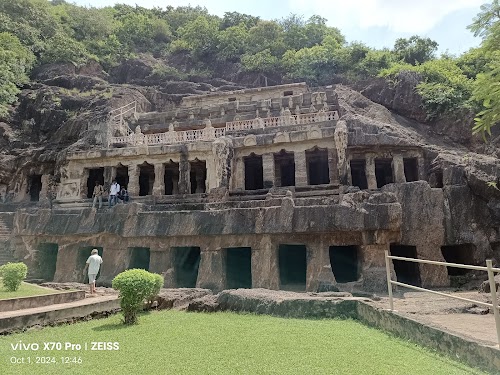
Undavalli Cave Temple
Krishna, India
- Admire the rock-cut architecture.
- Discover carvings of Hindu deities.
- Explore the monolithic Vishnu statue.
- Learn about the cave's history.
- Photography of the cave complex.
Known for:
Description:
The Undavalli Caves are a magnificent example of ancient rock-cut architecture, located near Vijayawada in Andhra Pradesh. Carved out of a single sandstone hill, these caves are believed to date back to the 4th-5th centuries AD. The main cave features a massive monolithic statue of Anantashayana Vishnu, reclining on a serpent, which is a major attraction. The multi-story structure also houses several other deities and intricate carvings depicting scenes from Hindu mythology. The caves offer a glimpse into the rich cultural and religious heritage of the region, attracting tourists and devotees alike with their architectural grandeur and historical significance. The surrounding landscape adds to the serene and captivating experience of visiting the Undavalli Caves.
History:
The Undavalli Caves are primarily attributed to the Vishnukundin dynasty, who ruled the region during the 4th and 5th centuries AD. Some scholars also suggest possible Jain influences during the early stages of the caves' construction. The caves were initially dedicated to Jain deities, which is evident from some of the carvings. Later, they were converted into a Hindu temple complex. The main cave, with the impressive Anantashayana Vishnu statue, signifies the shift towards Vaishnavism. Over the centuries, the caves have witnessed various dynastic rules and have undergone modifications. Despite these changes, the Undavalli Caves stand as a testament to the artistic and religious synthesis that prevailed in ancient India.